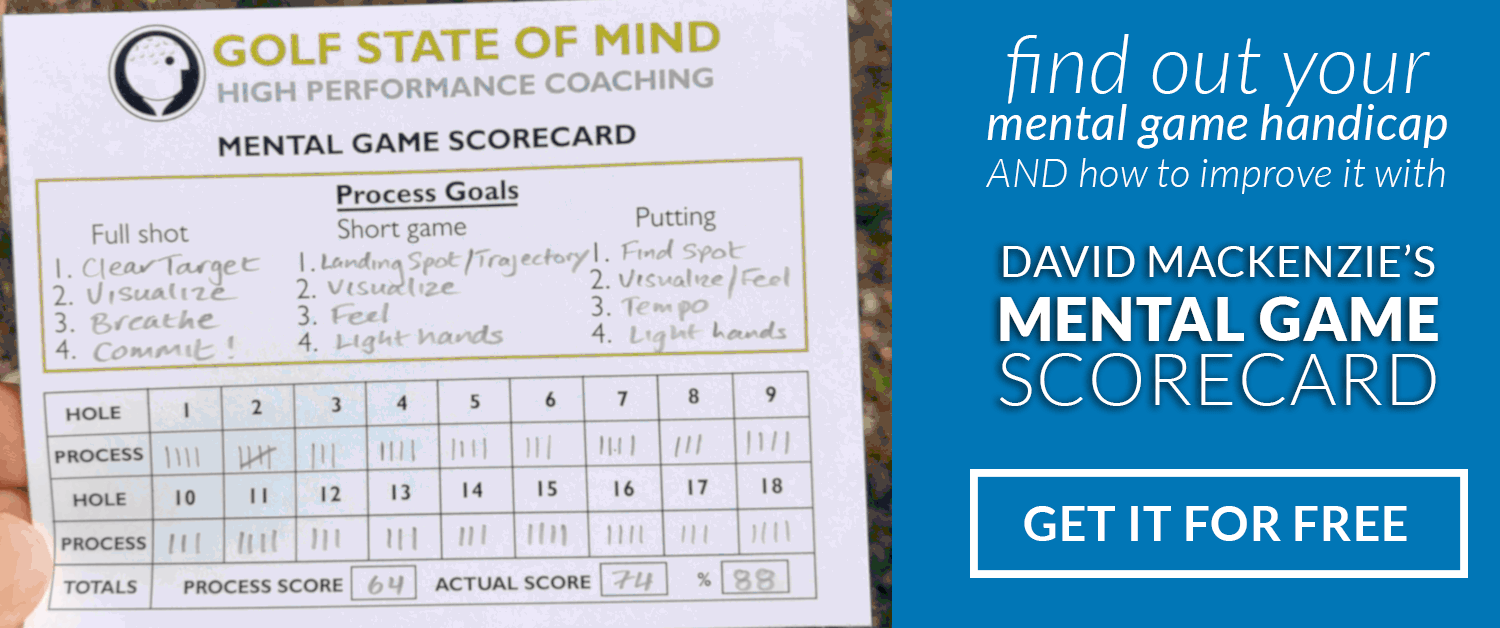
How Good Can You Become This Season?
Your success this season is completely within your control.
Instead of letting another golf season pass without seeing a change in your scoring average, let’s make this one different…
Over the next couple of weeks, I’m going to be posting some articles on how to create systemic change in the way you go about learning how to improve and getting the most out of every round.
This article will show you the building blocks for your plan for success.
Let’s set a goal for this season
How good can you become over the next year? Where would you like to be when you put the clubs away for the winter? What represents success?
Find a goal that’s realistic with your time available.
Write this down.
This is your performance or “outcome goal” for the season.
Where are you now?
You need an honest/accurate baseline for where your game is right now. Not just the last round, but an average of the last 5-10 rounds. If you don’t currently gather data, it’s worth starting. My favorite tool to to help with this is GAME GOLF
So what is the difference between where you are now and where you want to go?
If you want to lower your scoring average by 5 shots between now and the end of the season, where are you currently losing those shots? We need to break the long-term (season long) goal, into smaller short-term cycles. For me, during the peak playing months, these could be 8-10 week cycles.
The game tracker I mentioned calculates “shots gained” which allows you see exactly where you are losing those 5 shots. E.g. your shots gained putting could be -4 compared to the level you want to play at (this means you are losing an average of 4 shots per round to this scoring average because of your putting).
If putting has the biggest negative shots gained number, that would be the place to start. In this case, you would set a short-term goal around putting, something like, reducing putts per GIR to 1.8 in 8-10 weeks or “lowering my strokes gained putting by 1 stroke”. Give this short-term goal a firm end date.
Practice Plans for Golf
Once you’ve determined the specific areas of your game you need to improve, you need to find the right exercises needed to improve them.
I’ve got a complete menu of games to choose from in my “GSOM Practice Drills eBook”. In this system, I explain how to use the Tour player “⅓ Rule” of Technique, Body and Mind Synchronization and Simulation. I’ve got almost 100 drills to choose from.
Process goals
It’s important not to get too outcome driven, there has to be a nice balance of appreciation for the process and the achievement of outcome (just like during a round of golf).
Each week, set yourself a goal for the number of drills you are going to do within the time allocation. E.g. If you have 5 hours a week to practice, you’ll need to figure out how much time should be spent on what E.g. 3 hours putting, 1 hour short game, 1 hour long game. Then within that, what exercises should be done?
The more detailed you can be about where you are losing those shots that stand between you and your long-term goal, the better for determining exactly what you need to practice. E.g. If you’re losing 4 strokes a round due to your putting, which specific ranges you are struggling with? If you know that your putting average from 11-20ft is 2.4, but you’re great from 4-6ft, then clearly you need to work on the longer range putts.
Journaling your process goals and your successes is very important – are you meeting your weekly process goal objectives?
Need help with a plan?
Get a 30 min session with me. If you’d like to discuss your goals for 2016 and how to go about achieving them, please use this link to book a session (includes an assessment). I can help you look at your statistics and set the most suitable long and short term goals based on your numbers and available time. We can set a practice plan with specific goal end dates, so you’ll have increased accountability.
Thanks for reading. As usual, I’d appreciate any questions or comments.


